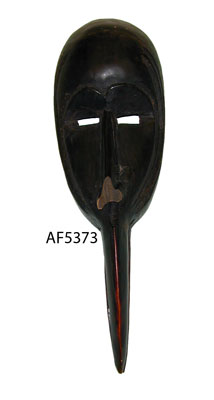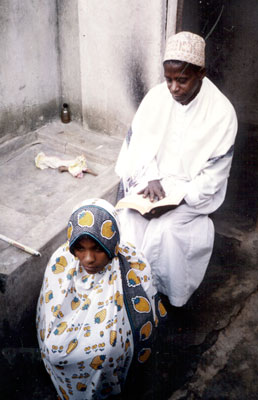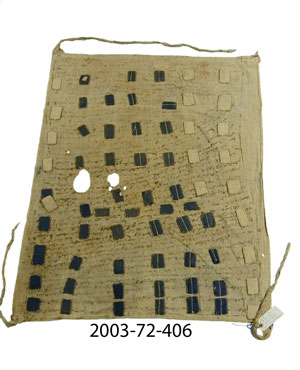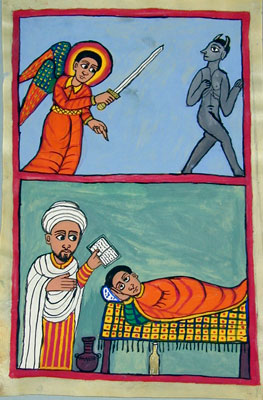
Widespread inscriptions on the body and personified representation in image have conditioned how the meaning of suffering is communicated in Africa. The rise of literacy and the introduction of sacred texts such as the Bible and the Koran provide powerful mediums for healing. "Drinking the word" in Islam, "reading as healing" and "gazing into the eyes" of Ethiopian Christian icons, provide alternative transformation in African healing. The goal of this section is to use a number of excellent objects in the Penn collections to teach about the widespread use in North, Northeast, and Eastern Africa—often within Islamic, Coptic Christian, and Hebrew traditions--of words and images in healing.

Visible Images and Hidden Scripts illustrates the situated nature of African Judaism, Christianity, and Islam and related knowledge forms with an object that dramatically juxtaposes traditional African self-representation with writing: a Poro men's society face mask from Liberia that has Arabic numerals and texts inscribed on its inside surface. The juxtaposition of ceremonial knowledge of the mask and hidden written text combines to produce a powerful ritual object for ceremonial and therapeutic efficacy.

Reading as Healing features Hadi's Commentary on Mohamed's Words, from Morocco, printed in Cairo, 1354, to provide, with excerpted translation, a better grasp for the exhibition visitor of how sacred texts are understood, or how other texts are used, in a healing role. This is accompanied by a photo of Tanzanian Sufi mganga Kingiri-Ngiri of Dar es Salaam reading an Arabic book to heal a woman of menstrual problems. Several examples of wooden writing tablets are shown from which the ink inscriptions are washed off to prepare a therapeutic drink, "consuming the words of God." These tablets are accompanied by a photograph of a scribe writing on such tablets, and tea leaves, in the compound of Sudanese Sufi Sheikh Mohmed, North Khartoum.

Words of Protection identifies numerous examples of amulets featuring Arabic script, possibly from the Koran, and packets of text or medicines sewn on to or inserted in pockets of cloth or harnesses to be worn. These objects include two large robes worn by warriors for protection in battle, an Egyptian Hebrew boy's phylactery with passages from Deuteronomy and Exodus, and an amulet with cowrie shells and an Arabic text inserted into a pocket. This is accompanied by an Egyptian Coptic rosary and crucifix.

Images that Heal begins with an Ethiopian painting that alludes visually to the subject of the previous display. In the lower part of two panels of a painting a cleric is reading to a sick patient, while in the top panel an angel is driving away the afflicting "Satan" with his sword. Another amuletic Ethiopian icon shows three panels, the first of Christ's crucifixion, the second of St. George killing the dragon, and a third of Daniel with raised hands before two passive lions. There follow several Ethiopian healing scrolls with several familiar icons, including the eyes of God, and the outline of a patient.
Although the visitor to this exhibition section may recognize some familiar words and images— e.g., biblical characters, references to God—their use in protection and healing may seem strange. One lesson that may be drawn from this section is that the religious tradition that many claim as their own is applied differently in other cultures of the world. Learning the appreciation of difference within common broad cultural understanding is one obvious teaching point.